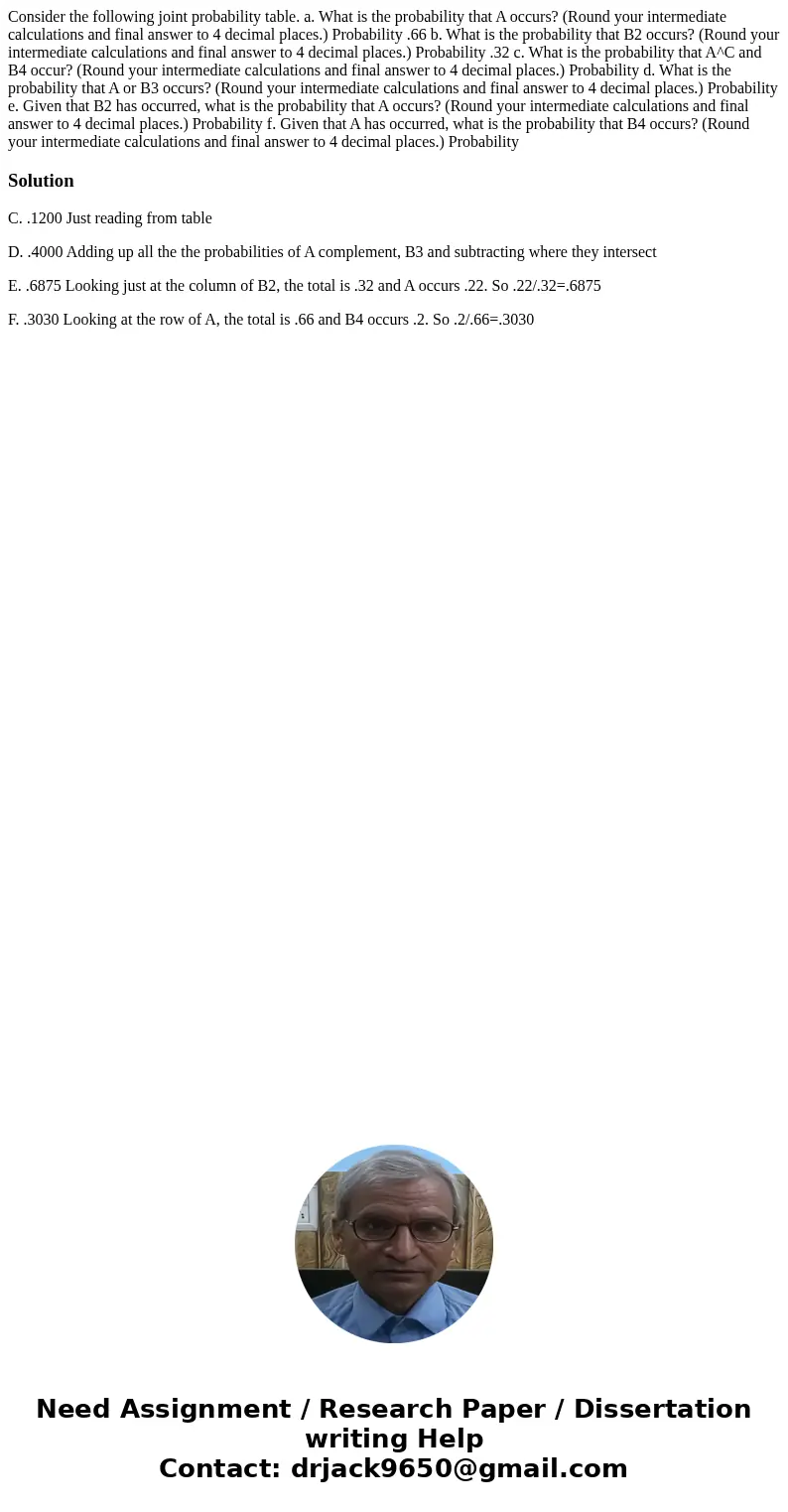Consider the following joint probability table a What is the
Consider the following joint probability table. a. What is the probability that A occurs? (Round your intermediate calculations and final answer to 4 decimal places.) Probability .66 b. What is the probability that B2 occurs? (Round your intermediate calculations and final answer to 4 decimal places.) Probability .32 c. What is the probability that A^C and B4 occur? (Round your intermediate calculations and final answer to 4 decimal places.) Probability d. What is the probability that A or B3 occurs? (Round your intermediate calculations and final answer to 4 decimal places.) Probability e. Given that B2 has occurred, what is the probability that A occurs? (Round your intermediate calculations and final answer to 4 decimal places.) Probability f. Given that A has occurred, what is the probability that B4 occurs? (Round your intermediate calculations and final answer to 4 decimal places.) Probability 
Solution
C. .1200 Just reading from table
D. .4000 Adding up all the the probabilities of A complement, B3 and subtracting where they intersect
E. .6875 Looking just at the column of B2, the total is .32 and A occurs .22. So .22/.32=.6875
F. .3030 Looking at the row of A, the total is .66 and B4 occurs .2. So .2/.66=.3030

 Homework Sourse
Homework Sourse